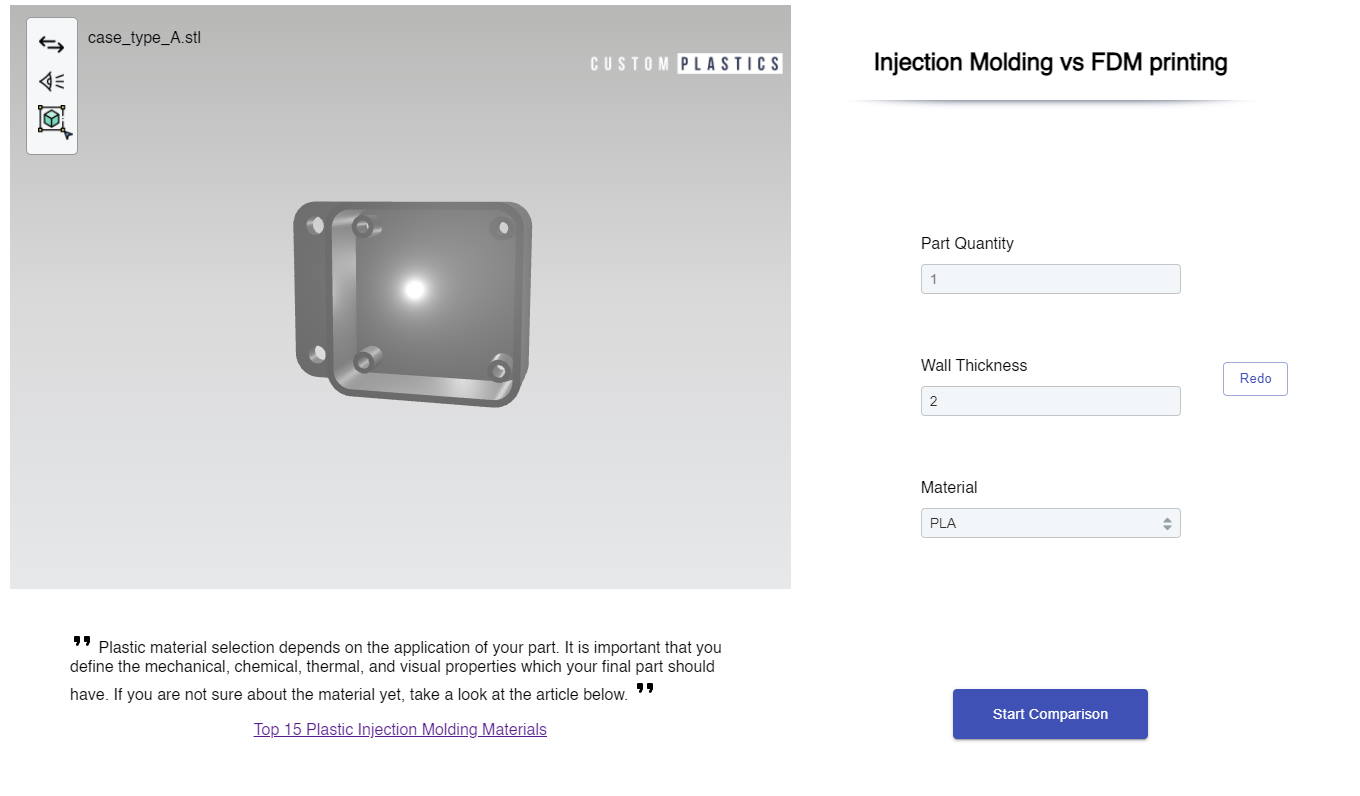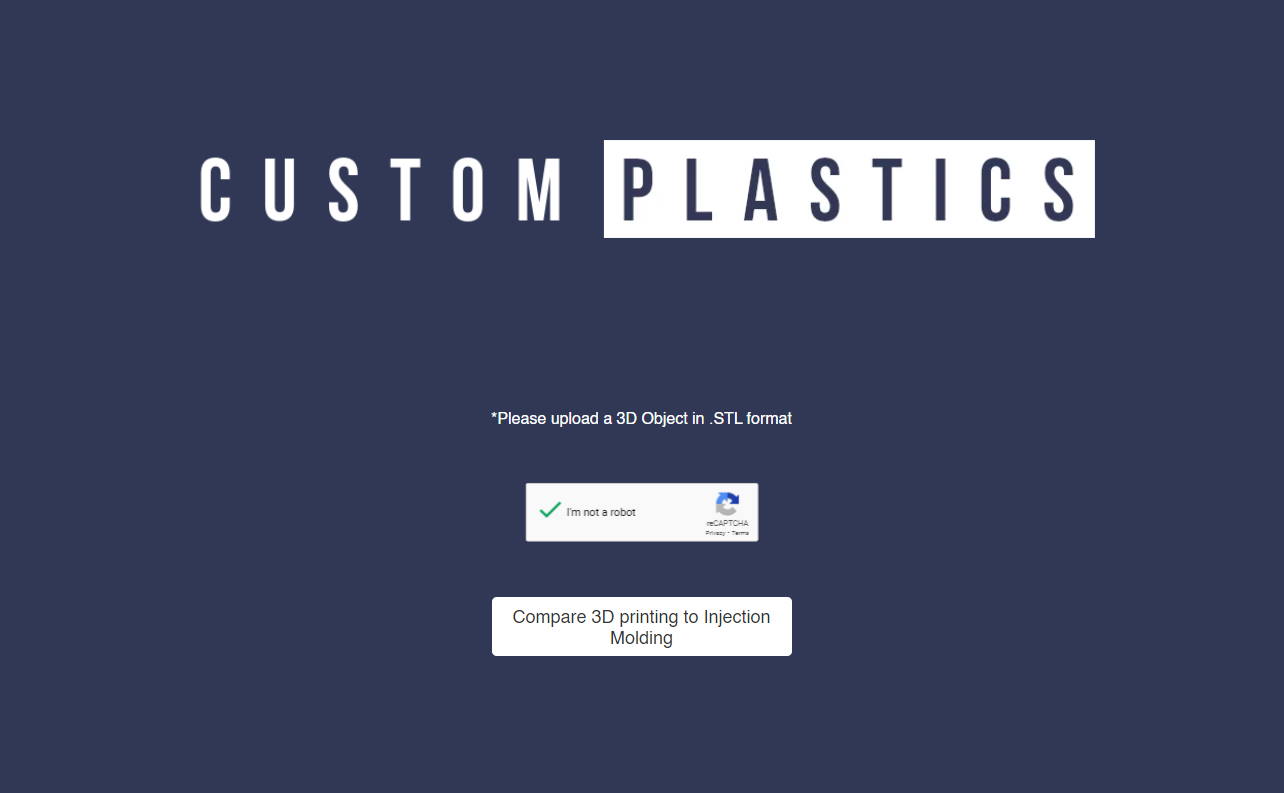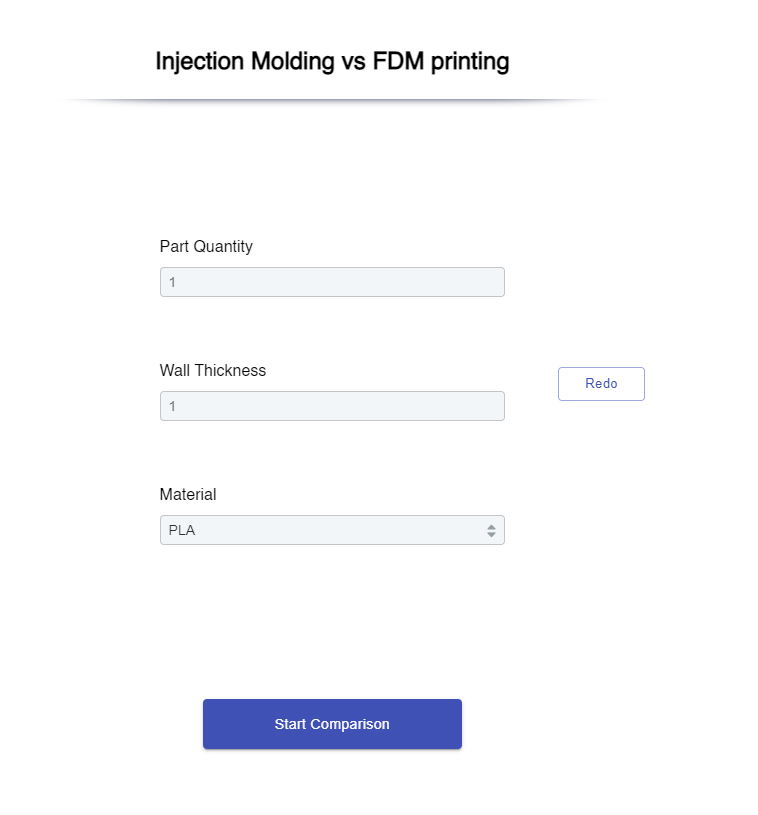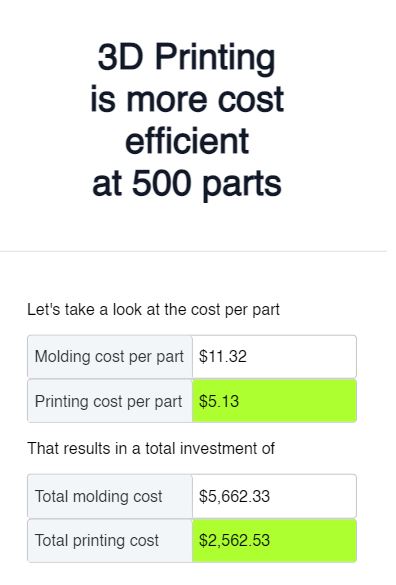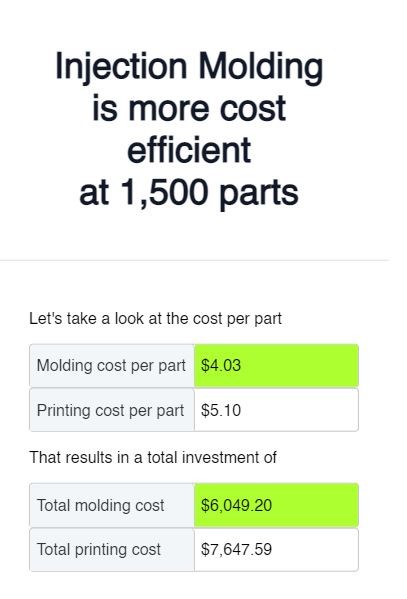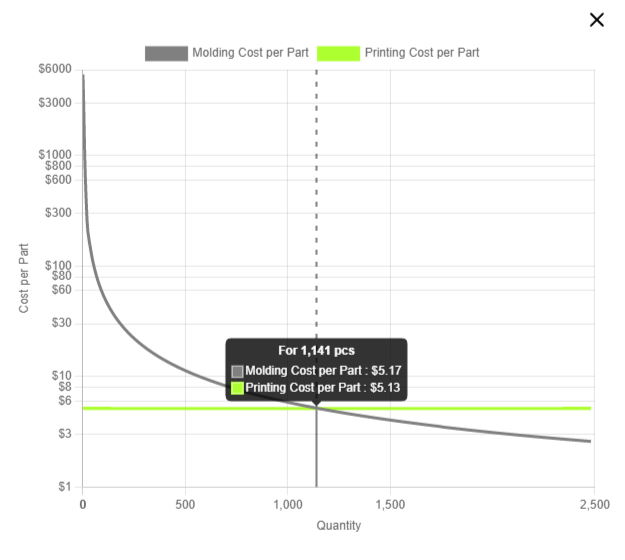This molding calculator works with STL files only at this moment. Larger files, that are converted from STEP, X_T, etc. can take a bit longer to analyze (up to 30-60s). A small loader in the bottom right corner should let you know how much of the structure has been analyzed.
This tool has to calculate mold, production, and 3D printing prices to give you an overview. There is AI that has learned from over 10,000 plastic injection projects and uses solid default values. With this, we can bring down the input to the bare minimum. You only need to know which material your plastic part should be and the average wall thickness that you have designed the part with.
If you realize in this step that you have not really paid much attention to the wall thickness and thus have some pretty thick areas as well as thin areas, we highly recommend tweaking your design a bit. Wall thickness plays a major role in injection molding and can make or break a project. Always try to use the thinnest wall thickness that fulfills your structural requirements.
All values are in metric units as it is easier to convert and calculate. There might be an option to enter imperial units in the future. For now, please use metric values (mm).
The best way is to just enter your wall thickness manually. Normally the value should be between 1 and 6 mm for most parts. If you don't know your wall thickness you can also use the semi-automatic tool by clicking "continue".
You will then be asked to click on 3 points within your model that represent wall thickness. Due to the nature of this semi-automatic process, the result's accuracy can vary. In case the value is different from what you would expect, redo and use different points on your model.
You need to fill out those minimum requirements in order to get a price estimate on your part.
The amount of parts is probably the key input for this comparison. Eventually, answering the question of whether you should use injection molding or 3D printing, is comparing the investment costs and with the required quantity and cost per unit. As a rule of thumb, there are almost no projects with more than 10,000 pcs needed that would benefit from 3D printing them.
While there are almost an unlimited amount of material compositions available as resin for injection molding, the supply of material for 3D printing is more limited. However, there is much more variety available now than there was several years ago. Material prices are based on average purchase prices for a certain material group.
If you need inspiration for materials, take a look at the article below.
Top 15 Plastic Injection Molding MaterialsWall thickness plays a major role in injection molding. In 3D printing, it is not as crucial, as long as you follow certain required guidelines in the design stage.
The decision on the number of cavities is closely related to the manufacturing schedule and needs. We recommend you to start estimating the injection molding price with 1 cavity. After that you can adjust the number of cavities to hit your manufacturing schedule or price per part.
The runner system plays a major role in production efficiency and scrap. Cold runner molds, even though cheaper, have plastic scrap in form of runners. Hot runner molds eliminate most of the waste but come at a premium price. Our default is a cold runner mold.

